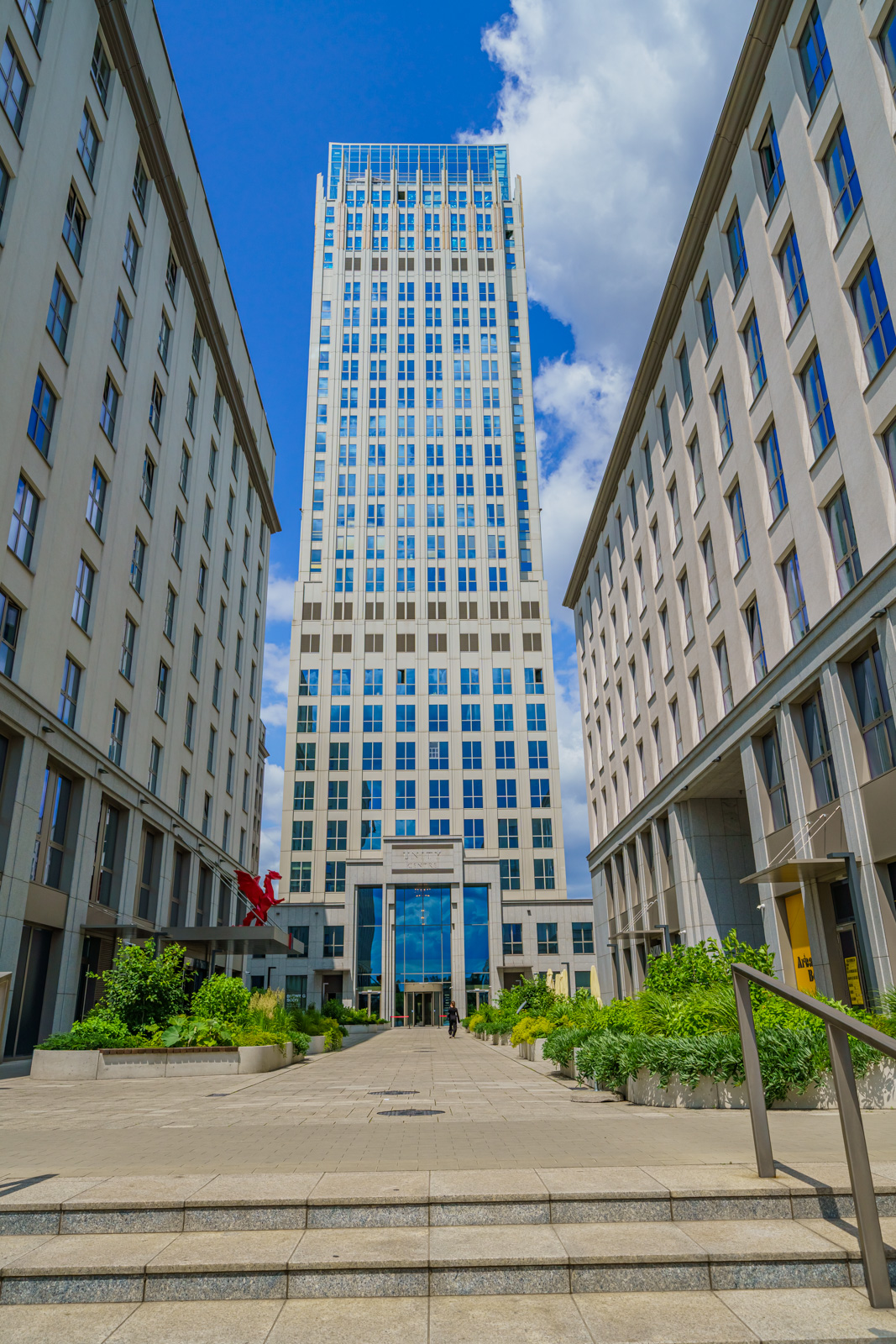Changes in the Polish office sector happen not only from a quantitative aspect but in qualitative terms as well. There is growing interest in multi-functional projects on the market. The share of flex space, which is an interesting option for large tenants is also increasing, according to JLL summarizing the situation on the Polish office market at the end of Q3 2019.
Demand – it’s quality not quantity that counts
By the end of September 2019, demand in Poland was 1.2 million sqm, a 15 percent increase on the same period last year. Excellent results were recorded on major markets outside Warsaw, where companies leased nearly 515,000 sqm – this is a 23 percent increase compared with the corresponding period of 2018. This is largely due to the spectacular performance of Kraków, where 234,000 sqm was transacted (a 45 percent share of overall demand in regional markets).
“The development of the Polish office market shouldn’t be analysed only in relation to its growing scale, but also the quality of space being delivered. A growing number of tenants are interested in leasing space in mixed-use projects, which are often created as a result of the revitalization of large post-industrial complexes. An example is UBS in Kraków, which decided to move to the multifunctional project Fabryczna City. The flexible office solutions sector, developing rapidly as well, is also targeting large international corporations. From January to the end of September 2019, flex operators leased nearly 27,000 sqm in major cities outside Warsaw, which is already a 12 percent increase on 2018’s yearly performance,” said Karol Patynowski, Director of Regional Markets, JLL.
The largest deal, and a record-breaking one for the Polish market, was mBank’s pre-let for almost 46,000 sqm in the Mennica Legacy Tower. Another significant transaction was the renewal by Orange Polska for nearly 45,000 sqm in Miasteczko Orange. The top three is rounded off by T-Mobile’s renegotiation of its 27,000 plus sqm lease in Marynarska 12, Mokotów. The most notable transactions included on the major regional markets between Q1 and Q3 2019 was a pre-let for 19,300 sqm by UBS in Fabryczna Office Park, a renewal for 17,100 sqm by Motorola Solutions Systems Polska in Green Office, a pre-let for 16,000 sqm by Sabre in Tischnera Office, a renewal and expansion for 12,700 sqm by a tech giant in Quattro Business Park, and a renewal and expansion by Akamai for 11,500 sqm in Vinci Office Building (all in Kraków).
“It’s important to underline the changing structure of demand in Poland where, as is the case in Warsaw, pre-letting activity is growing. Between January and September 2019 one third of total take-up, almost 168,000 sqm, came from pre-lets. This is already 33 percent above the result for the whole of 2018,” said Karol Patynowski.
Supply – regions go for more
Strong demand boosts developer activity. Between Q1 and Q3 2019 almost 460,000 sqm was delivered to the market, with 315,000 being completed outside Warsaw. The biggest office project to enter the market was Business Garden in Poznań (second phase, 46,000 sqm).
“Poland is chasing Europe in terms of office supply, which currently amounts to almost 11 million sqm. Warsaw accounts for nearly 5.6 million sqm, and major regional markets offer approx. 5.3 million sqm. High developer activity is observed in all major cities, including Łódź, which crossed the 500,000 sqm office stock threshold. A further 1.7 million sqm is under construction on Poland’s office market with 900,000 sqm on major regional markets. Developers in Kraków, the Tri-City and Wrocław are currently the most active but Katowice is also seeing strong developer activity, with TDJ Real Estate starting the construction of the .KTW II. tower,” said Mateusz Polkowski, Head of Research and Consulting, JLL.
The biggest office development is Varso in Warsaw (110,000 sqm of office space), while on regional markets – Business Garden in Wrocław (second phase) which offers 70,000 sqm.
Vacancy rate and rents
The overall vacancy rate in Poland fell and currently stands at 8.7 percent. In Warsaw 8.2 percent of existing office supply is vacant, and in the largest regional cities – 9.1 percent. The Tri-City boasts the lowest vacancy rate (4.8 percent), while the highest rate can be found in Łódź (12.1 percent). Five regional cities saw falls in their vacancy rates y-o-y: Katowice, Kraków, Lublin, Szczecin and the Tri-City.
Due to increasing construction costs (both labour and materials), a rise in rents was noted in a number of Poland’s major office markets. In Q1-Q3 2019 a number of cities saw changes of prime headline rents: Kraków (€13.5 to €15.5 sqm/month), Katowice (€13.6 to €14.5 sqm/month), Poznań (€13.6 to €15 sqm/month), Łódź (€12 to €14 sqm/month), and Wrocław (€13.5 to €14.8 sqm/month).
Currently the highest rents are being quoted in Kraków. Some minor changes are expected in the next few quarters.
Prime rents in Warsaw are currently quoted at €17.0 to €24.0 sqm/month, while prime assets located in the best non-central areas lease for €11.0 to €15.0 sqm/month.







